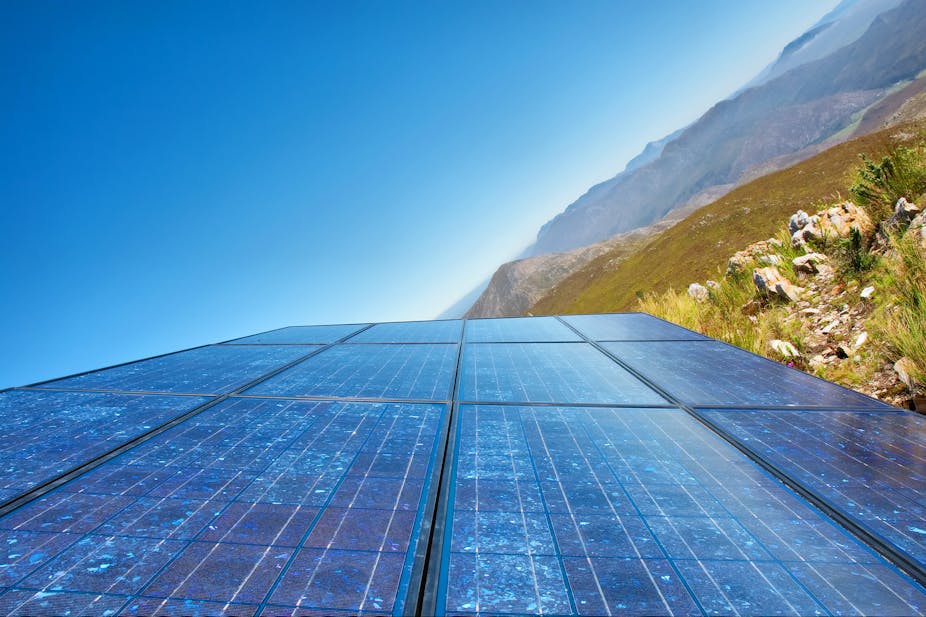South Africa has become one of the leading destinations for renewable energy investment with an estimated R193 billion already committed. But there are question marks over how successful the programme has been in balancing the demands of financial and commercial soundness, and requirements of economic development and community co-ownership.
The investment is the result of a renewable energy programme introduced by the government four years ago. Tariffs offered by the most recent renewable energy projects are now well below those that will come from the state energy utility Eskom’s future coal plants.
The programme has been applauded internationally for its strong regulatory framework, tough qualification criteria and strong economic development and community ownership requirements.
Off to a good start
Since its launch in 2011, the programme has brought a diversity of new players and sources of investment to South Africa. Consolidation is now taking place, with international firms playing a leading role in project development.
Fewer companies have won more megawatts (MW) with each bidding round. Two examples are consortia led by Italy’s Enel Green Power and Ireland’s Mainstream Renewable Power.
This consolidation has seen smaller South African developers being priced out of the market by foreign companies. Some have sold their equity share at financial close to a larger company.
South Africa’s energy supply crisis
South Africa’s renewable energy industry is emerging in the midst of the country’s worst electricity supply side crisis in 40 years. This has resulted in soaring tariffs and a downgrading of the national power utility Eskom to junk status.
The private sector-led renewable energy sector is being integrated into an electricity network run by a state monopoly. Eskom has historically depended on abundant and, until recently, low-cost coal reserves.
By June 2015, the renewables programme had procured more than 6327 MW under four bidding rounds. Of this, 53% was for wind, 36% for solar PV and 10% for concentrated solar power. It is anticipated that a further 6300 MW will be procured. Thirty-seven projects to a total of 1827 MW have now been connected to the grid.

The programme is based on competitive bidding. Potential developers bid to construct a renewable energy project below a certain tariff cap.
Unique to South Africa’s case, projects are scored 70% on tariff and 30% on economic development and community ownership criteria. Each bidding company must at a minimum be owned 40% by South Africans, of which a minimum of 12% must be black shareholders.
In addition, a minimum of 2.5% of the company must be owned by communities living within a 50km radius of the project site.
Complexity brings its own problems
Implementing the economic development criteria has posed a big challenge for developers. The economic development requirements of the programme are highly complex, incorporating 17 sets of minimum targets and thresholds. They also go beyond the core competence of most developers, many of whom have now contracted socioeconomic development consultants and/or community liaison officers.
According to one project developer I interviewed in late 2013:
Some companies are progressive, particularly those who have had a footprint in the country for some time. Others see it as a transaction cost and hope that their local counterpart will deal with it.
But failure to deliver on economic and community development could result in the purchase agreements being terminated.
Shareholders can sell their shares in a project three years after the commercial operation date. As project owners are responsible for the economic development criteria and community benefits, a key question is how this responsibility will be upheld when the ownership structure changes. As energy expert Anton Eberhard explains, after sale of equity, it is the owners “who are left to actually deliver on promises”.
Scrutiny of the renewable energy sector, as of any infrastructure development, is important. Based on economist Mariana Mazzucato’s thesis:
Investment must socialise the risks as well as privatising the rewards.
This refers to the nature of investment that seeks short term profits backed by the state, while the longer term costs are often paid for by the general public.
However, there must also be scrutiny of the potential diversity of other electricity generation projects emerging in the wake of South Africa’s electricity crisis. This includes privately produced power from cogeneration, gas and baseload coal.
It also includes a 9,600 MW government-run nuclear power programme. There is no certainty around this and little transparency around who will build it, where and at what cost.
Furthermore, the devastating human and environmental impact of the country’s long term coal development and related infrastructure should not be forgotten.
Meanwhile, the costs of Eskom’s Medupi coal-fired power plant have escalated from R70 billion to R120 billion or more in the past five years.
Lessons learned from the renewables programme must be extended to ensure that the socioeconomic and environmental benefits of energy development are upheld at both a local and national level.

